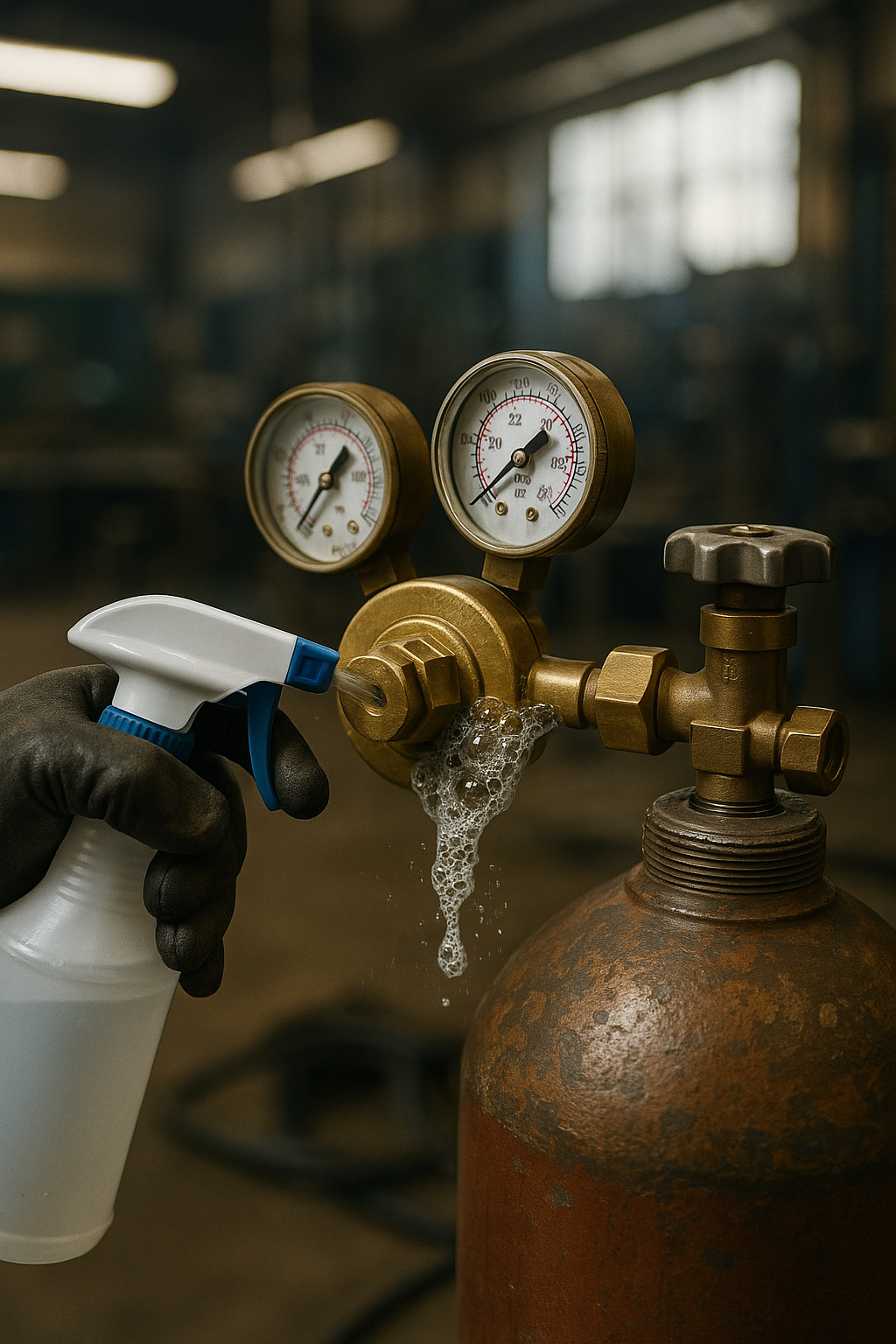A leaking gas regulator can spell disaster in any welding setup. Whether you’re running MIG, TIG, or oxy-fuel equipment, a compromised regulator risks gas loss, safety hazards, and poor weld quality. Fortunately, testing for leaks is simple and only takes a few minutes — if you know what you’re doing.
In this guide, we’ll walk through how to properly check your welding gas regulator for leaks, what tools you need, and the signs that it’s time to replace or repair your setup.
Why Regulator Leaks Are a Big Deal
A leaking regulator doesn’t just waste expensive shielding gas like argon, CO₂, or acetylene — it can cause:
- Porosity in welds due to inconsistent gas flow
- Backfire or flashbacks in oxy-fuel setups
- Oxygen enrichment or fire risk in poorly ventilated areas
- Shortened regulator lifespan and failed pressure seals
Even small leaks can snowball into bigger problems if left unchecked.
Tools You’ll Need
You don’t need a high-tech lab setup to test your regulator. Here’s what you need:
- Soapy water solution (dish soap with no oil + water in a spray bottle). Be sure to get soap with no oil because it can not be around compressed oxygen.
- Leak detection fluid (optional but more precise)
- PPE: gloves and eye protection
- Regulator and gas cylinder
- Wrench for tightening connections
How to Test a Regulator for Leaks
1. Check for Physical Damage
Before you even connect it, visually inspect the regulator:
- Cracks or corrosion around the body
- Bent gauges or broken needle indicators
- Loose fittings or broken inlet/outlet threads
If you spot any of this, don’t bother testing — replace it.
2. Secure the Regulator to the Cylinder
Use the correct wrench to firmly tighten the regulator onto the gas cylinder valve. Make sure no Teflon tape is used on CGA connections — they seal via metal-to-metal compression, not threads.
3. Open the Cylinder Valve Slowly
With the regulator’s pressure-adjustment knob fully backed out (loose), crack the cylinder valve open just slightly, then fully open it. You should see tank pressure register on the gauge.
4. Apply Soapy Water or Leak Detector
Spray the soapy water solution around these key areas:
- Cylinder-to-regulator connection
- Regulator body seams
- Gauge threads and faces
- Outlet fitting and hose connection
Watch closely for bubbling — even small ones signal a leak.
Pro tip: Use a leak detection fluid rated for welding gas systems if available. It’s more sensitive than soap and less likely to corrode brass fittings.
5. Pressurize and Retest
If no bubbles show at tank pressure, dial in 10–20 psi on the working pressure side, then recheck the outlet connections. This ensures no leaks develop once the system is live.
What to Do If You Find a Leak
- At the tank connection: Try reseating and re-tightening the regulator. If it still leaks, the regulator seat may be damaged or the cylinder valve may be faulty.
- At the body or gauges: Replace the regulator. Internal leaks can’t be repaired easily or safely.
- At the outlet or hose: Check fitting tightness. If it still leaks, replace the hose or fitting.
Never use a leaking regulator during welding. It’s not worth the risk.
When to Replace Your Regulator
- If you see persistent leaks despite tightening
- If your regulator is more than 5–7 years old and shows wear
- If gauges are inaccurate or slow to respond
- If threads or seats are damaged
Upgrading to a quality regulator can save gas and headaches long term.
Final Thoughts
Testing for gas leaks should be a part of your routine maintenance, especially if your welds suddenly start looking rough or your gas tanks are draining too fast. A simple spray test can help prevent wasted gas, poor welds, and serious safety issues.
Note: Some of the links on this page may be affiliate links. If you click and buy, we may earn a small commission at no extra cost to you. We only recommend gear we trust.
If you’re regulator needs to be replaced, here are some options for replacement. Gas Regulation Replacement


Leave a Reply